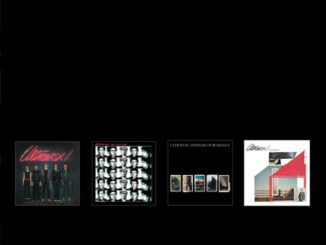
The killer app: that one simple idea that will change the world. It’s what every technology company aspires to build, and many non-tech companies, too. We know, for example, that Frank Zappa hit on the idea of music streaming nearly 30 years before the rise of Spotify – before home computers were ubiquitous, for that matter.
Technology was slow to catch up to Zappa’s vision, but in the mid-’90s two killer apps planted the seed for a revolution in the music industry. The first was Netscape Navigator, the first widely accepted web browser. The next was the MP3 file format, which compressed music files down to a portable size. Savvy users found Internet Relay Chat (IRC) channels where they could swap MP3s, and the file sharing era was born.
In 1999, Napster was introduced and the need to be inherently tech savvy to swap files vanished. The platform’s easy to use interface and peer-to-peer network turned a relative trickle of file sharing into an absolute boom, but there were two problems: 1) There was no quality control because 2) all of the music was pirated. Files were mislabeled and sound quality was wildly variable, and that assumed you got the whole song. It wasn’t uncommon to download a song only to find chunks of it missing. Enter Steve Jobs. Stephen Witt writes in How Music Got Free:
Steve Jobs disapproved of file-sharing, and was seeking to create a legal paid alternative. He was building a music application called iTunes, whose calm white interface and slick, expensive iconography promised to cleanse the world of sin… the file-sharers of Napster would be given moral instruction in virtues of paid distribution, and – Apple’s representatives were insistent on this point – the MP3 format would be abandoned.
“Building iTunes” is a bit of a stretch. Jobs was passionate about both music and intellectual property rights. He was also an adept and visionary marketer who knew an opportunity when he saw one. Throughout ’99, a flood of competing MP3 players hit the market while the major labels grumbled about piracy and Napster users swapped files at a lightning pace. One of those early technologies was SoundJam MP – a Mac-compatible MP3 player introduced in mid-1998, prior to the rise of Napster. In 2000, Apple bought the company and reconfigured and re-branded SoundJam. It was the beginning of iTunes 1.0.
iTunes paired Napster’s user friendliness with features that were equally friendly to the major labels. Peer to peer sharing was gone, though users were able to copy compact discs into their iTunes libraries, and eventually MP3 was gone, too. Apple’s chief insisted on AAC, the next generation of file compression developed by MP3’s creators. But that group (from whom Apple had to license the technology) insisted upon MP3 due to its market dominance. Jobs would eventually get his way, but for iTunes 1.0, it was MP3 all the way.
Not that it mattered much. When Jobs introduced iTunes at the Macworld Expo in San Fransico on January 9, 2001, Apple only accounted for three percent of the home computer market. In terms of the world at large, not everyone was really listening. But Jobs had bigger plans than just a Mac-based media player. He envisioned a self-contained music universe with iTunes at its center. Users would purchase high quality downloads directly from Apple and play them on a proprietary portable player that seamlessly integrated with their other products. Three percent of market share wasn’t part of the plan.

The company introduced the iPod October 23, 2001 and Apple devotees immediately took to it in a big way. The little player with its distinctive scroll wheel surpassed all sales expectations, providing Jobs with the firepower he needed to pitch the iTunes Store. Throughout 2002, he tried to convince Universal Music Group to agree to make their catalog available to iTunes users for 99 cents per song, but UMG wasn’t interested. Eventually, they realized that iPods were going to end up in every pocket, and in April 2003, the iTunes Store finally went live with UMG’s massive catalog available for legal download. Later that year, Apple released a Windows-compatible version of iTunes.
This is when things really heated up. With all of the pieces in place, Apple’s marketing department went into marketing overdrive. That iPod commercial featuring Jet‘s “Are You Gonna Be My Girl” became ubiquitous, as did the company’s distinctive white earbuds. Apple made a killing (their stock price increased 700%) but UMG wasn’t reaping much benefit. In 2005, digital music only comprised one percent of Universal’s sales.
Three years later, the iTunes Store was crowned the largest music retailer in the United States. Since 2010, it’s been the largest in the world. The store has grown into a multimedia clearinghouse, selling apps, movies and television shows alongside music. Jobs, of course, lived to see his vision dominate the marketplace but succumbed to cancer in October 2011.
Since then, Apple has found itself playing catch-up in the latest killer app race and online streaming, where they find themselves running out of the medals behind Pandora, Spotify and YouTube. Whether they’ll eventually dominate that market remains to be seen, but whatever happens January 9, 2001 forever marks the day that Apple laid the groundwork for the legitimate digital music industry.
Via Diffuser FM
If you’re looking to buy files of music that you can’t see, hold or own then……you’re in the wrong place! However, if you’re looking for some gorgeous vinyl records, CDs, music memorabilia and more, be sure to check eil.com




Be the first to comment